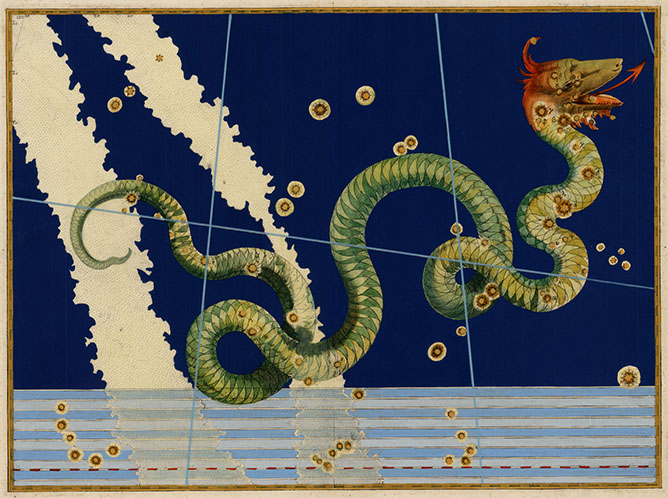Serpens: The Serpent
Pronunciation: SER-punz
| Serpens Constellation Profile | |
|---|---|
| Abbreviation: Ser | Genitive: Serpentis |
| Origin: Ancient | Location: Celestial Equator |
| Best View (North): Summer | Best View (South): |
| Bordering Constellations: Serpens Cauda: Ophiuchus, Sagittarius, Scutum, Aquila Serpens Caput: Corona Borealis, Bootes, Virgo, Libra, Ophiuchus, Hercules | |
The Myth Behind the Constellation Serpens
Serpens, “The Serpent” is the snake that taught the legendary healer Asclepius (see Ophiuchus) the medicinal powers of plants. Asclepius once killed a snake, and observed another snake bringing it back to life by placing a plant on it. The physician used this principal to become skilled in medicine. When Asclepius was killed, the serpent was placed in the night sky along with him.Serpens Constellation Points of Interest
| Interesting Objects in the Constellation Serpens | ||||
|---|---|---|---|---|
| Name | Messier | NGC | Type | Visibility |
| M5 | NGC 5904 | Globular Cluster | Binoculars | |
| Eagle Nebula | M16 | NGC 6611 | Nebula | Binoculars |
Bright Stars in Serpens
These are the stars in Serpens with a minimum magnitude of 3.0.| Name | Bayer Name | Magnitude | Color | Luminosity | Distance |
|---|---|---|---|---|---|
| Unukalhai | Alpha Serpentis | 2.63 | Orange | 84 suns | 73 ly |